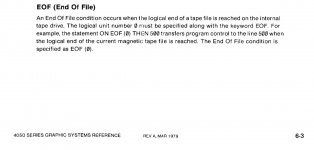I've read with interest the recent 4051 discussions here and have noticed that a tape emulator has been mentioned. I too have recently repaired a 4051 and since the tape drive is not functional, I am looking for alternatives. I thought it would be nice to just throw a bunch of images on an SD card and access via the GPIB. I was working on a similar project for the HP series 80 machines so already have a microcontroller wired to an SD card and HPIB drivers. I was planning to work on this over the holiday break when I have some spare time. Is anyone else actively pursuing this? Does this sound useful or is there a better way? I'd prefer not to have to connect to another computer to load programs.
Thanks,
Bill
Thanks,
Bill


